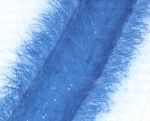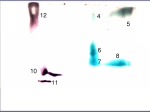Sabine Lüthje
Dr.rer.nat.habil.
Private Lecturer
Private Lecturer
Structure and Function of Plasma Membrane Redox Systems
The plasma membrane builds the outer permeability barrier of the cell that achieves important functions in cell signaling, transport processes, plant development and stress response. About 40 years ago, a constitutive transmembrane electron transport system - the so-called standard system - was demonstrated for plasma membranes of eucaryotic cells. Besides the standard system, a second transmembrane electron transport system was demonstrated in root plasma membranes of non-grass monocots and dicots that is induced by iron deficiency (so-called turbo system or ferric-chelate reductase, FRO).Several redox proteins could be identified in highly enriched plasma membrane fractions prepared by aqueous polymer two-phase partitioning (APTPP): b-type cytochromes and NAD(P)H oxidoreductases. The structure, electron transfer mechanism and function of plasma membrane-bound redox systems are one of our major topics.
An increasing evidence suggests association of plasma membrane redox components with microdomains (so-called lipid rafts) and protein assemblies. Beside physicochemical studies and lipid analysis of plasma membranes, proteomic approches were established in our laboratory to investigate the participation of redox proteins in putative protein assemblies. Both, blue native and clear native electrophoresis (hrCNE) confirmed an interaction of redox proteins with high molecular mass protein assemblies. Composition of those complexes depends on the state of development, physiological conditions and plant material investigated.

Redox staining

APTPP

Plasma membranes

hrCNE





